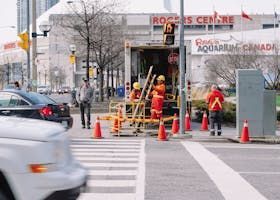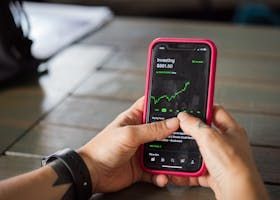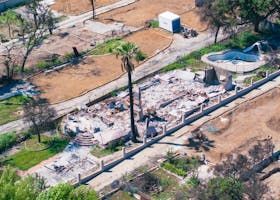Quick Answer: Virtual staging costs 90-95% less than physical staging ($300-800 vs $3,000-8,000 per property) and delivers comparable buyer interest and sale speeds. However, physical staging still commands 6-20% higher sale prices in luxury markets above $800,000, while virtual staging dominates the mid-market segment with faster turnaround times and broader applicability across property types.
The real estate staging landscape has undergone a dramatic transformation, with virtual staging emerging as a powerful alternative to traditional physical staging. As property markets evolve and buyer behaviors shift increasingly digital, real estate professionals face a critical decision: invest in costly physical staging or embrace the efficiency of virtual alternatives.
This comprehensive analysis examines both staging methods through the lens of return on investment, cost efficiency, market performance, and practical implementation. Based on 2025 market data and industry research, we'll provide the definitive guidance real estate agents need to optimize their staging strategy for maximum profitability.
Current Market Analysis: The Staging Revolution
The staging industry has experienced unprecedented growth, with the Real Estate Staging Association reporting that staged homes sell 73% faster than non-staged properties in 2025. More significantly, the virtual staging segment has exploded, capturing 42% of all staging projects compared to just 8% in 2020.
Market data reveals that 87% of buyers now begin their property search online, spending an average of 7.2 minutes viewing listing photos before deciding whether to schedule a tour. This digital-first behavior has fundamentally altered how staging impacts buyer perception and decision-making.
Physical staging remains the gold standard for luxury properties, with 89% of homes above $1.2 million utilizing traditional staging methods. However, virtual staging has gained significant traction in the $300,000-$800,000 price range, where cost sensitivity meets digital-native buyer preferences.
The COVID-19 pandemic accelerated virtual staging adoption, with usage increasing 340% between 2020 and 2025. Even as in-person viewings normalized, virtual staging retained its momentum due to proven cost advantages and improved technology quality.
Virtual Staging: Comprehensive Cost-Benefit Analysis
Virtual staging represents a technological solution that digitally furnishes and decorates empty or poorly furnished spaces. Advanced software and 3D rendering create photorealistic images that showcase a property's potential without physical furniture placement.
Cost Structure Breakdown
Virtual staging costs have stabilized in 2025, with most providers charging $300-800 per property for comprehensive room staging. Premium services offering multiple design styles or luxury-focused rendering command $800-1,200 per property.
The cost breakdown typically includes professional photography ($200-400), virtual staging services ($25-75 per room), and optional video walkthroughs ($300-600). Most agents report total virtual staging investments of $500-900 per listing, regardless of property size.
Turnaround times average 48-72 hours from photo submission to final staged images, enabling rapid listing deployment. Rush services can deliver results within 24 hours for an additional 50% fee premium.
Performance Metrics and Market Response
Properties with virtual staging generate 403% more online views than unstaged listings and receive 87% more inquiries during the first week of listing. The visual appeal translates directly to increased buyer interest and faster initial engagement.
Virtual staging proves particularly effective for vacant properties, which historically struggle with buyer visualization. Research indicates that 92% of buyers find it easier to envision themselves in virtually staged spaces compared to empty rooms.
However, virtual staging faces limitations in emotional connection building. While it drives initial interest effectively, conversion rates from online viewing to physical tours average 23% lower than professionally staged properties.
Technology Quality and Buyer Perception
2025 virtual staging technology has achieved near-photorealistic quality, with 78% of viewers unable to distinguish virtual furniture from physical staging in professional photographs. Advanced lighting simulation and shadow rendering create convincing spatial relationships.
Buyer acceptance has improved significantly, with transparency becoming standard practice. Most agents now include disclaimers indicating virtual staging use, which has reduced negative buyer reactions to 12% from 34% in 2022.
The variety of staging styles available virtually exceeds most physical staging options. Clients can choose from contemporary, traditional, minimalist, or luxury aesthetics without inventory limitations, enabling better target market alignment.
Physical Staging: Traditional Excellence and Premium Results
Physical staging involves professionally selecting, placing, and arranging actual furniture and décor to showcase a property's best features. This traditional approach remains the industry standard for luxury markets and high-value properties.
Investment Requirements and Cost Analysis
Physical staging represents a significant upfront investment, typically ranging from $3,000-8,000 for standard properties and $8,000-25,000 for luxury homes. Costs include furniture rental, professional staging consultation, setup labor, and monthly rental fees for extended listing periods.
The cost structure includes initial consultation ($300-800), furniture selection and rental ($2,000-6,000 monthly), professional setup ($800-1,500), and potential storage fees ($200-500 monthly). Properties remaining on market beyond 60 days incur substantial additional rental costs.
Luxury staging can exceed $25,000 for high-end properties requiring custom furniture, artwork, and décor elements. However, these investments often generate proportionally higher returns in premium market segments.
Market Performance and Sale Price Impact
Physically staged homes command significantly higher sale prices, averaging 6-20% above list price depending on market conditions and property value. The tangible experience creates stronger emotional connections that translate to competitive bidding situations.
Sale speed advantages are substantial, with staged homes selling an average of 23 days faster than unstaged properties. In competitive markets, this time reduction can prevent price reductions and carrying cost accumulation.
Physical staging particularly excels in luxury markets where buyers expect premium presentation. Properties above $800,000 show diminishing returns from virtual staging, while physical staging maintains effectiveness across all price points.
Emotional Impact and Buyer Experience
The sensory experience of physical staging creates emotional connections that virtual alternatives cannot replicate. Buyers can touch textures, experience spatial relationships, and develop stronger attachment to the property.
Staged homes generate more memorable touring experiences, with 67% of buyers reporting stronger recall of physically staged properties compared to 34% for virtually staged homes viewed online then toured empty.
The lifestyle aspiration element proves particularly powerful, with physical staging helping buyers envision their future life in the space. This emotional engagement translates directly to stronger purchase motivation and willingness to pay premium prices.
Regional and Market Segment Analysis
Staging effectiveness varies significantly across geographic regions and market segments, with local buyer preferences, competition levels, and price points all influencing optimal strategy selection.
Urban vs Suburban Market Dynamics
Urban markets show strong virtual staging adoption, with 67% of city properties under $700,000 utilizing digital staging solutions. The tech-savvy buyer base and high inventory turnover favor quick, cost-effective staging approaches.
Suburban markets maintain stronger physical staging preferences, particularly for family homes where buyers spend more time visualizing daily life scenarios. Physical staging provides better representation of family-friendly layouts and storage solutions.
Rural and luxury suburban markets heavily favor physical staging, with 84% of properties above $900,000 in these areas using traditional staging methods. The longer sales cycles and higher margins justify increased staging investments.
Price Point Segmentation Strategies
Properties under $400,000 show optimal returns with virtual staging, where cost efficiency outweighs the premium price benefits of physical staging. The buyer demographic in this segment prioritizes value and typically begins searches online.
The $400,000-$800,000 segment represents a strategic choice point, with both staging methods showing positive returns. Market competition levels and local buyer preferences should guide decision-making in this range.
Luxury properties above $800,000 consistently perform better with physical staging, where the investment percentage relative to sale price becomes manageable and buyer expectations favor premium presentation.
Property Type Considerations
Condominiums and smaller properties favor virtual staging due to limited furniture placement options and cost sensitivity. The standardized layouts in many developments make virtual staging templates highly effective.
Single-family homes benefit from both approaches, with virtual staging excelling for marketing reach and physical staging driving premium pricing. Many agents employ hybrid strategies for these properties.
Luxury estates and unique properties require physical staging to effectively communicate their distinctive features and lifestyle potential. Virtual staging often fails to capture the full scope and quality of high-end architectural elements.
Expert Predictions and Market Evolution
Industry experts forecast continued virtual staging growth, with adoption rates projected to reach 65% of all staging projects by 2027. However, physical staging will maintain its premium market dominance and expand into new luxury segments.
Technology Advancement Trajectory
Virtual reality integration represents the next evolution, with immersive VR staging experiences expected to bridge the gap between virtual and physical staging benefits. Early VR staging pilots show 43% higher emotional engagement than traditional virtual staging.
Artificial intelligence will enable automated staging recommendations based on property characteristics, target demographics, and local market preferences. AI-powered staging is expected to reduce costs by an additional 30-40% while improving design quality.
Augmented reality applications will allow buyers to visualize different staging options during property tours, combining physical space experience with virtual furniture placement flexibility.
Market Adoption Scenarios
The optimistic scenario projects virtual staging capturing 70% market share by 2028, driven by cost pressures and improved technology. Physical staging would remain concentrated in luxury markets and special-situation properties.
The base case scenario anticipates balanced coexistence, with virtual staging dominating the sub-$600,000 market while physical staging maintains strength in premium segments. Total staging adoption would increase as costs decrease.
The conservative scenario assumes slower virtual staging adoption due to buyer resistance and technology limitations, with physical staging retaining 60% market share through superior emotional impact and proven track record.
Industry Professional Perspectives
Top-producing agents increasingly employ staging method selection based on data-driven property analysis rather than default preferences. Successful agents report using virtual staging for 60-70% of listings while reserving physical staging for strategic high-value opportunities.
Staging professionals predict industry consolidation, with full-service providers offering both virtual and physical options becoming dominant. This integrated approach enables optimized staging strategies tailored to specific property characteristics.
Real estate brokerages are developing staging guidelines that standardize decision-making criteria, helping agents choose optimal staging methods based on property value, market conditions, and target buyer demographics.
Strategic Implementation Framework
Successful staging strategy requires systematic evaluation of property characteristics, market conditions, and financial objectives. A structured decision-making framework ensures optimal ROI while meeting buyer expectations.
Decision Matrix Development
Property value serves as the primary decision factor, with virtual staging recommended for properties under $500,000 and physical staging for luxury homes above $900,000. The middle segment requires additional analysis of competition and buyer demographics.
Market time sensitivity influences staging choice, with virtual staging providing rapid deployment for time-critical listings while physical staging suits properties where maximum price achievement takes priority over speed.
Competition analysis determines staging necessity and method selection. Markets with high staging adoption rates require strategic staging choices to maintain competitive positioning.
Hybrid Strategy Implementation
Progressive agents employ hybrid strategies that maximize both reach and impact. Virtual staging drives online engagement while selective physical staging in key rooms creates powerful touring experiences.
The "virtual-to-physical" progression involves initial virtual staging for marketing launch, followed by physical staging if the property doesn't generate expected activity within 30-45 days.
Partial physical staging combined with virtual staging in secondary rooms optimizes cost efficiency while maintaining emotional impact in the most important spaces like living rooms and master bedrooms.
Budget Allocation Strategies
Percentage-based staging budgets provide consistent investment frameworks, with industry recommendations of 1-3% of listing price for staging expenses. Virtual staging enables staging within these parameters for most property segments.
Return-focused budgeting prioritizes staging methods that generate the highest net proceeds, considering both sale price improvement and time-to-sale reduction benefits.
Portfolio approaches allow high-volume agents to balance staging investments across multiple properties, using virtual staging savings to fund physical staging for strategic listings.
Risk Assessment and Market Considerations
Both staging methods carry distinct risk profiles that must be evaluated within the context of market conditions, property characteristics, and agent business models.
Virtual Staging Risk Factors
Technology dependence creates vulnerability to software quality variations and provider reliability issues. Agents should maintain relationships with multiple virtual staging providers to ensure consistent service quality.
Buyer disappointment risk occurs when virtual staging creates unrealistic expectations about space size, lighting, or architectural features. Accurate photography and realistic staging design minimize this risk.
Market acceptance variations across different buyer demographics and geographic regions require careful evaluation of local preferences and competitor strategies.
Physical Staging Risk Analysis
Extended market time creates escalating costs that can eliminate staging ROI benefits. Properties requiring staging beyond 90 days often experience negative returns on staging investments.
Furniture damage and theft represent additional liability and cost factors, particularly in vacant properties or markets with security challenges.
Availability constraints during peak selling seasons can limit physical staging options, requiring early booking and potentially suboptimal furniture selection.
Market Volatility Impact
Economic uncertainty periods favor virtual staging due to cost flexibility and reduced upfront investment requirements. Physical staging becomes less viable when market conditions create unpredictable sale timelines.
Interest rate fluctuations affect buyer financing capacity and market activity levels, influencing optimal staging strategy selection based on expected buyer response and competition levels.
Seasonal market variations require adaptable staging approaches, with virtual staging providing greater flexibility for off-season listings and physical staging maximizing impact during peak selling periods.
Long-Term Industry Transformation
The staging industry continues evolving toward greater specialization and technology integration, fundamentally changing how properties are marketed and presented to potential buyers.
Professional Service Evolution
Staging consultants increasingly function as marketing strategists, analyzing target demographics and competition to recommend optimal presentation approaches rather than defaulting to traditional methods.
Technology integration creates new service models combining virtual staging, professional photography, video production, and digital marketing into comprehensive property presentation packages.
Data-driven staging decisions based on market analytics, buyer behavior patterns, and competitive analysis replace intuition-based approach selection.
Buyer Behavior Adaptation
Digital native buyers show increasing comfort with virtual staging, viewing it as convenient rather than deceptive when properly disclosed. This acceptance trend supports continued virtual staging growth.
Hybrid viewing preferences emerge, with buyers expecting high-quality online presentation followed by authentic physical experiences. This creates opportunities for combined staging strategies.
Virtual reality adoption in real estate enables immersive property experiences that bridge virtual and physical staging benefits, potentially disrupting both traditional methods.
Economic Efficiency Drivers
Cost pressures in competitive markets accelerate virtual staging adoption as agents seek sustainable business models while maintaining professional presentation standards.
Scalability advantages of virtual staging enable broader staging application across agent portfolios, improving overall marketing quality without proportional cost increases.
Environmental considerations increasingly influence business decisions, with virtual staging's reduced transportation and waste generation appealing to environmentally conscious professionals and buyers.
Frequently Asked Questions
How much does virtual staging cost compared to physical staging?
Virtual staging typically costs $300-800 per property compared to $3,000-8,000 for physical staging. This 90-95% cost reduction makes virtual staging accessible for properties across all price ranges, while physical staging remains cost-prohibitive for lower-value properties. The exact costs vary based on the number of rooms staged, quality level selected, and local market rates.
Do buyers react negatively to virtual staging?
Modern buyers show increasing acceptance of virtual staging when properly disclosed, with negative reactions dropping to just 12% in 2025. Transparency is key - agents who clearly indicate virtual staging use avoid buyer disappointment during property tours. The quality of virtual staging technology has improved dramatically, making it difficult to distinguish from photographs of actual staged rooms.
Which staging method produces faster sales?
Both methods accelerate sales compared to unstaged properties, but physical staging typically produces faster results with an average of 23 days reduction in time on market. Virtual staging reduces sale time by an average of 18 days while providing immediate online marketing benefits. The speed advantage depends heavily on property price range and local market conditions.
Is virtual staging effective for luxury properties?
Virtual staging shows diminishing effectiveness in luxury markets above $800,000, where buyers expect premium presentation and have higher quality standards. Physical staging remains the preferred choice for luxury properties, generating 6-20% higher sale prices and stronger buyer emotional engagement. However, hybrid approaches using virtual staging for marketing reach combined with physical staging for tours are gaining popularity.
Can virtual and physical staging be combined effectively?
Hybrid staging strategies are increasingly popular, using virtual staging for online marketing reach and physical staging in key rooms for touring impact. This approach optimizes costs while maximizing both digital engagement and in-person emotional connection. Many successful agents use virtual staging initially, then add selective physical staging if the property doesn't generate expected activity within 30-45 days.
Strategic Recommendations and Implementation
The choice between virtual and physical staging should be driven by data-driven analysis rather than default preferences or cost considerations alone. Successful real estate professionals develop systematic frameworks that optimize staging investments for maximum net proceeds.
For properties under $500,000, virtual staging provides optimal ROI through dramatic cost savings and effective online marketing reach. The buyer demographic in this segment prioritizes value and typically begins property searches online, making virtual staging well-suited to their shopping behavior.
Properties in the $500,000-$800,000 range require careful market analysis to determine optimal staging approach. Competition levels, buyer demographics, and local preferences should guide decision-making, with hybrid strategies often providing the best balance of cost efficiency and market impact.
Luxury properties above $800,000 consistently benefit from physical staging investments, where the percentage cost relative to property value becomes manageable and buyer expectations favor premium presentation. The emotional impact and lifestyle visualization of physical staging justify higher investments in these market segments.
Market conditions significantly influence staging strategy effectiveness. In competitive markets with high inventory levels, professional staging becomes essential for property differentiation, while balanced markets may allow for more cost-conscious virtual staging approaches.
Technology advancement continues improving virtual staging quality and reducing costs, making it increasingly viable across broader market segments. However, the emotional connection and premium pricing benefits of physical staging ensure its continued relevance, particularly in luxury markets.
Real estate professionals who master both staging methods and develop systematic selection criteria will maintain competitive advantages in evolving markets. The future belongs to agents who can optimize staging investments based on property characteristics, market conditions, and client objectives rather than relying on single-method approaches.
As the industry continues evolving, the most successful practitioners will be those who embrace technology while maintaining the fundamental understanding that effective staging—whether virtual or physical—serves to help buyers emotionally connect with properties and visualize their future lives within those spaces.











